Regenerative Agriculture 101: Everything You Need to Know
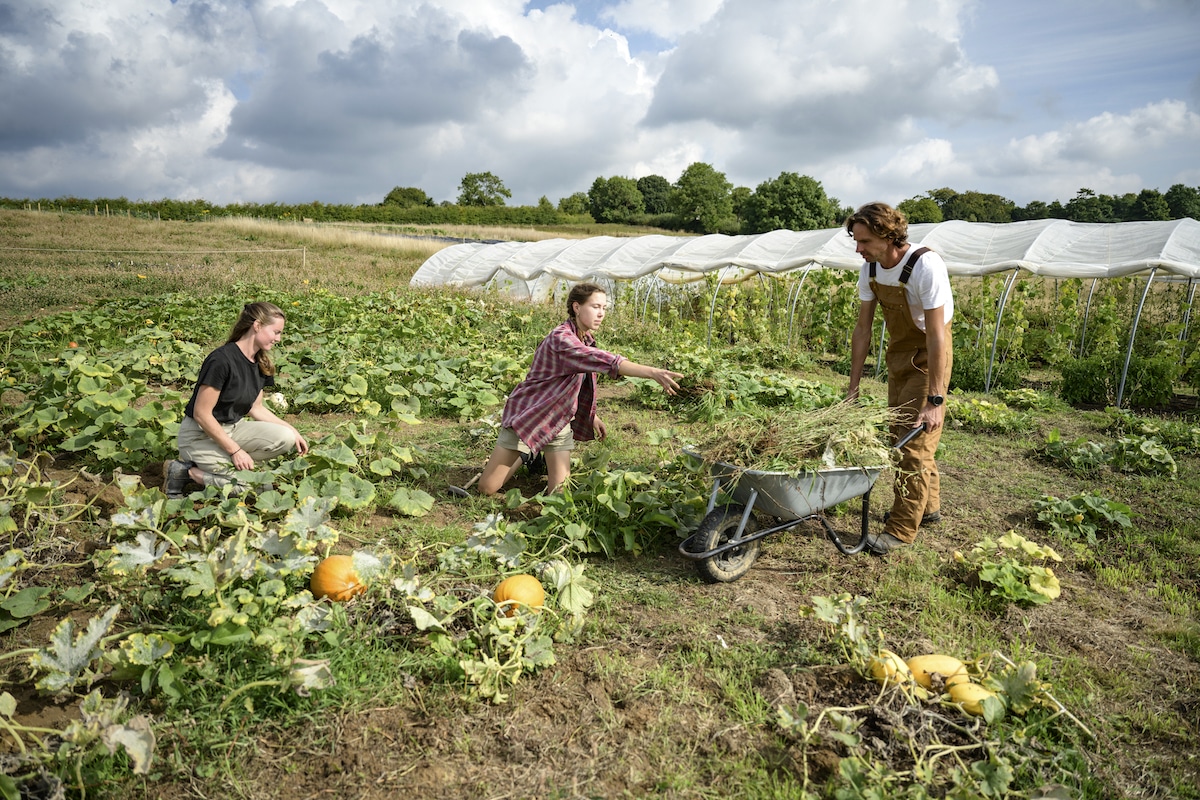
 Why you can trust us
Why you can trust us
Founded in 2005 as an Ohio-based environmental newspaper, EcoWatch is a digital platform dedicated to publishing quality, science-based content on environmental issues, causes, and solutions.
Quick Key Facts
- In regenerative agriculture, the physical, biological and chemical integrity of the soil is preserved through minimal disturbance.
- Indigenous cultures maintain and have maintained a regenerative relationship with their natural environments, including the soil, for thousands of years.
- Regenerative farming helps build healthy soil and increases plant diversity.
- Through regenerative agricultural practices like using cover crops and no-till farming, nutrient-dense, chemical-free foods are produced.
- Healthy soils maintained through regenerative farming trap water and nutrients and maximize the efficiency of water use.
- Regenerative agriculture improves water quality and helps to restore and protect rivers, lakes and streams.
- In the 1980s, Pennsylvania’s Rodale Institute began using the term “regenerative agriculture”; its founder, Bob Rodale, wanted to not only incorporate sustainability into farming, but regeneration.
- Regenerative soil practices can reverse climate change by restoring the degraded biodiversity of soils and rebuilding organic matter, resulting in increased carbon sequestration and a healthier water cycle.
- Making the shift to holistic and regenerative agricultural and grazing practices can help restore the grasslands that cover a third of the surface of the Earth, 70 percent of which have been degraded.
What Is ‘Regenerative Agriculture’?
Regenerative agriculture is a term for holistic farming and animal grazing practices that restore biodiversity in degraded soils, rebuild the natural organic matter in the soil, improve the water cycle and, through photosynthesis, draw carbon from the atmosphere into the soil where it is stored. The basis of regenerative agriculture is a land management philosophy that involves improving soil health while building nutrient density and crop resilience.
Regenerative farmers and ranchers build a stronger connection with the land through observation and understanding of what it has to give, as well as its limits. This allows them to adjust their practices when necessary to create a balanced, sustainable relationship.
Regenerative practices include no- or minimum-till farming and the use of cover crops, crop rotation, natural animal manure fertilizers and compost to replenish the soil microbiome and rebuild and recycle essential nutrients that have been stripped by synthetic and artificial fertilizers. Border habitats for bees and other soil- and plant-friendly insects are another component of soil regeneration and plant health. Regenerative grazing practices that are well-managed increase deposits of carbon in the soil, help stimulate plant growth and improve soil fertility, land productivity and the availability of micronutrients while contributing to the overall health of the ecosystem.
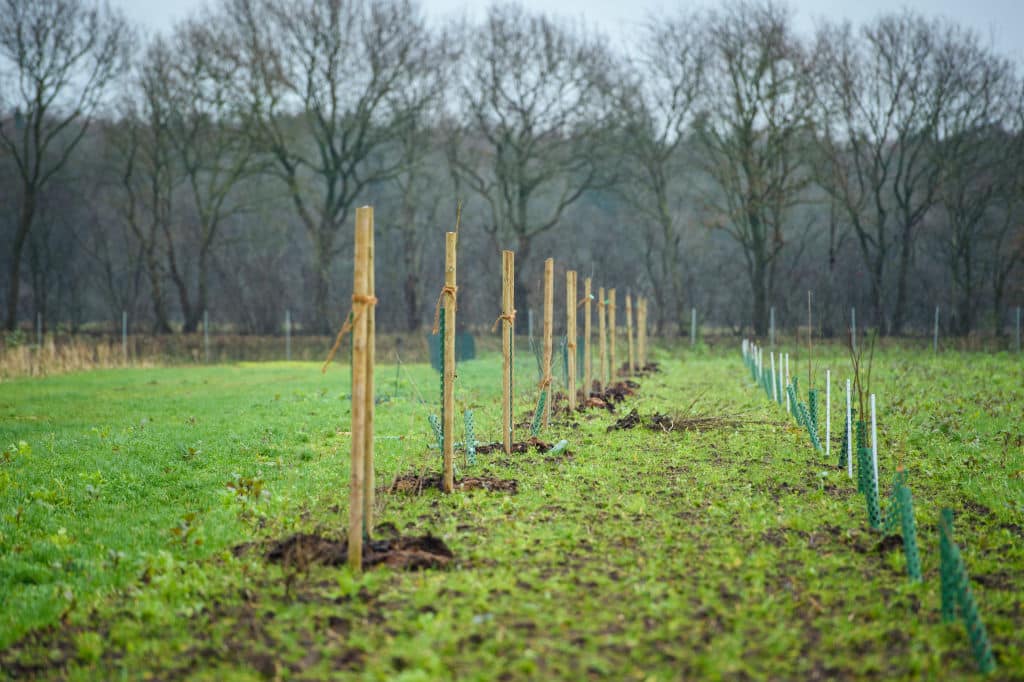
What Is the Basic Philosophy of Regenerative Agriculture?
The philosophy behind regenerative agriculture is a holistic way of growing crops and ranching that began with our Indigenous ancestors. The farming and ranching methods that were developed as a natural result of living in harmony with nature and the local community were based on treating the water, soil, crops, animals and people with whom we share our habitat as a mutually-dependent, interconnected system.
Modern industrial agricultural practices have done great damage to the soil through erosion and runoff and have polluted waterways, decimated forests, destroyed the habitats of countless animals, including endangered species, and destroyed populations of pollinators like bees.
Modern agriculture and ranching have upset nature’s balance, and to again live in harmony with nature we must regenerate the land, soil, water and habitat that have been so recklessly damaged and destroyed.
Focusing on individual crop yields without consideration for the consequences to the surrounding natural environment is not sustainable. Regenerative farmers and ranchers take a broader world and multigenerational view of their agricultural practices by maintaining or rebuilding healthy soils, drawing down carbon, taking care not to pollute waterways, reducing or eliminating chemical fertilizers and pesticides and growing healthier foods for their communities.
Basic Principles of Regenerative Agriculture
Promote Biodiversity
Promoting biodiversity is the foundational principle of regenerative agriculture and is where all roads of its philosophy lead. A healthy ecosystem will naturally promote biodiversity, and as we work to rebuild and rebalance an ecosystem that has been disrupted by destructive agricultural practices, some of its rich biodiversity — perhaps not all, depending on the level of destruction — will reemerge.
Two agricultural methods that promote biodiversity are cover crops and crop rotation. Cover crops are those that are planted with the sole purpose of protecting the soil, with no intention of harvesting them. These crops protect soil from erosion by weather, which can wash or blow it away or dry it out.
Rotating different crops each season allows plants like legumes to deposit beneficial nitrogen into the soil via bacteria that colonize their roots. These are called nitrogen fixing plants. The bacteria takes nitrogen from the air and converts it so that it can be used by the plant for its growth. After the bacteria’s use of the nitrogen is complete, it is deposited into the soil for the original host plants and other crops to use.
Eliminate or Decrease Tillage Through No-Till Farming
No matter what the type of landscape, soil is the foundation of agriculture and ecosystems. Without it there would be no habitat and no food for animals or people to eat. One of the biggest goals of regenerative agriculture is to create healthy soil, and one of the best ways to allow soil to regenerate is to decrease how much it is tilled.
No-till farming is a method that involves planting into the soil without plowing it first. The low level of disruption leaves most of the carbon dioxide stored in the soil intact, rather than releasing it into the atmosphere, which would contribute to global warming.
No-till farming also keeps soil from becoming eroded. Erosion removes topsoil, which is the most valuable part of the soil from an agricultural standpoint. Topsoil contains the most organic material and weathered minerals, which help plants grow. This means it is the most productive part of the soil. Topsoil loss means lower crop yields, which result in higher cost. Erosion from the loss of topsoil can cause gullies, which make cultivating pastures impractical. Erosion can also cause sedimentation and higher levels of pollution in rivers and streams.
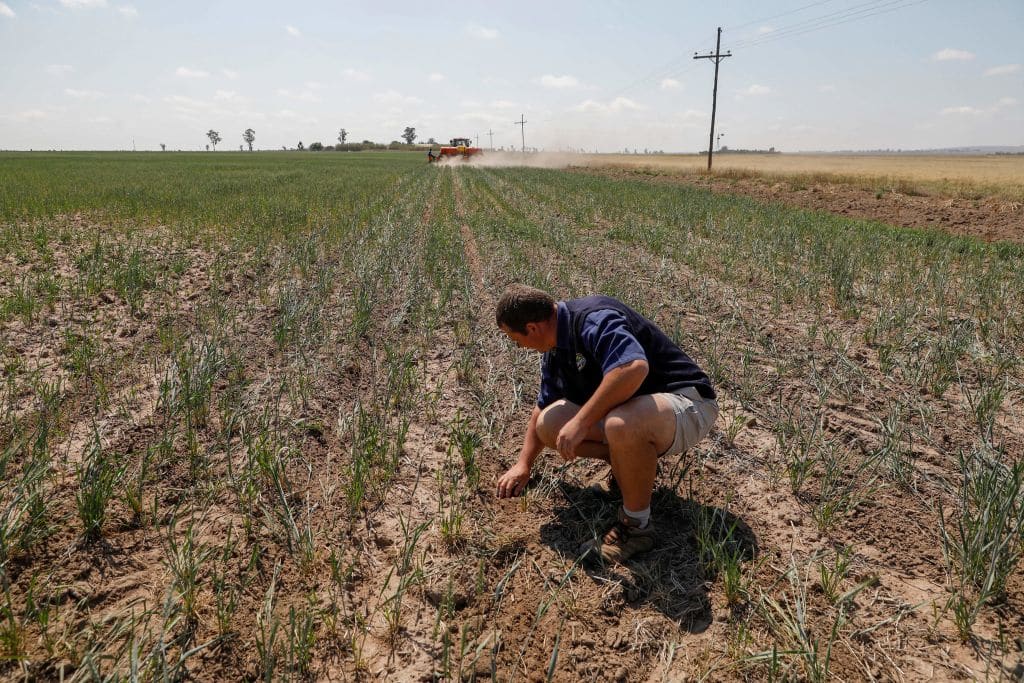
Reduce the Use of Artificial Fertilizers
The use of synthetic fertilizers in industrial agriculture has caused a chronic imbalance of the natural microbes in soil, similar to when a person takes antibiotics and it throws off the natural balance of flora in their digestive system. When the soil’s microbes are off-balance, it hinders the natural nutrient absorption processes. This results in plants that are weak and need synthetic fertilizers to sustain them.
The chemicals in synthetic fertilizers also worsen the climate crisis by seeping into the atmosphere and water.
By contrast, the elimination or reduction of artificial fertilizers allows the natural balance of microbes to regulate the soil-plant connection.
Grow a Diverse Array of Crops
Monoculture is rare in a natural ecosystem. Most natural ecosystems contain a variety of plant species living together and benefiting each other. Modern agriculture has become dependent on monocultures for their easy manageability, but the long-term consequences are, in fact, unsustainable without the extreme methods and synthetic fertilizers that are destroying our planet’s natural balance.
For centuries, Indigenous farmers grew a variety of crops next to one another, knowing that different types of plants have different benefits. Keeping crops diversified gives pollinators more sustenance and a variety of habitats, protects against diseases and pests and makes the soil healthier.
For instance, perennial plants — those that live more than two years — have extended root systems that improve soil health, sequester and store more carbon, retain water and improve the porosity of the soil.
When there is crop diversity, it leads to diversity in the soil belowground, as each plant species brings with it different organisms. This variety provides nutrients for the soil’s food network. Each organism and group of organisms brings unique minerals to the soil’s food cycle, which operates best with as diverse a variety of interconnections as can be achieved.
For more crop diversity, intercropping — when two cash crops are grown together— and companion cropping — the growing of two or more crops together to achieve pollination, pest control, insect habitat or space considerations in the interest of maximizing crop productivity — can be used, as can a variety of cover crops in order to improve the health of soil by increasing organic matter, increasing the moisture of soil, reducing erosion, slowing runoff from snowmelt and rainfall, improving the cycling of nutrients, keeping pests at bay and improving the structure and stability of soil. These benefits all lead to increased plant growth.
The purpose of companion crops is to augment phosphate or nitrogen content and to help with both aboveground and root growth of the primary crop. These crops should be of a variety that can be easily separated or controlled. Examples of companion crops include corn, peas, squash, clover and pole beans. Companion crops help alleviate the need for artificial fertilizers and pesticides.
Rather than being grown for sale, cover crops can provide hay or food for grazing livestock, as well as habitat and food for insects, pollinators and wildlife.
Plant Native Species
Plants that are native to a specific region can help with the restoration of wildlife habitat and improved biodiversity. They can be used as the main crop, as cover crops or as strips of land around crops — called conservation buffers — that are used to protect the soil by keeping in nutrients and reducing erosion.
Protect the Soil
This is an important principle of regenerative agriculture because covering the soil is important for building it because it keeps it intact, protecting it from heavy wind and rain, which can cause erosion, and from getting too dry during a drought.
Keeping continual living plant roots in the soil and maximizing plants’ surface cover allows the soil beneath them to evolve, as the plants and soil work their regenerative magic together.
To keep the soil covered, dead plant remnants from crops like straw or a cover crop can be used.
Employ Regenerative Grazing Management for Livestock
Traditional livestock feedlots are unhealthy environments for animals that lead to high levels of water and air pollution, greenhouse gas emissions and runoff of manure with high levels of nitrogen that can add to coastal “dead zones.” They also use feed that is low in nutrients.
In contrast, regenerative or rotational grazing is an Indigenous practice that simulates how animals naturally graze as they move across grasslands in herds. This method leads to increased plant and insect biodiversity, soil that is more fertile, water retention and carbon deposits in the soil and an overall improvement in the conditions of the pasture. Alternating between pastures helps make sure rangeland has enough time to regrow.
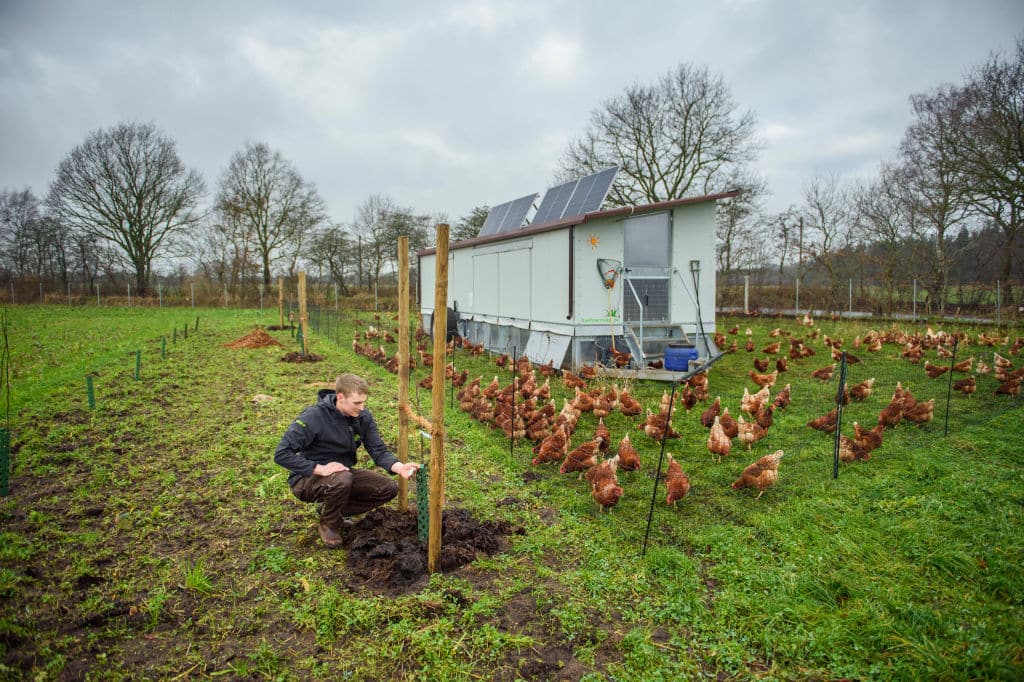
Animal Integration
This involves the integration of animals with the crop systems of the foods they eat by using rotational grazing methods that are thoughtfully and intensively managed, rather than keeping the animals and plants separate from each other.
When animals trample the surface of the soil, they break surface crusts that can inhibit the germination of seeds and shed rainwater. The animals’ trampling also pushes seeds into the soil to help the seeds survive drying from the sun and wind. Animals add organic matter to the surface of the soil, and their manure and urine recycles nutrients and enhances soil fertility.
Benefits of Regenerative Agriculture
Healthy and Fertile Soil
Through regenerative agricultural practices, the health and fertility of the soil are vastly improved, sometimes in as soon as one season. Crops become healthier and show higher yields. The soil packs more moisture, leading to spongier, darker soil aggregates — soil particles that bind to each other — that stick to plant roots deep down in the soil. Soils that have been allowed to regenerate contain diverse communities of microbes, which lead to healthy cycling of nutrients, water and carbon.
Improved Water Quality
Water quality and quantity are improved by regenerative farming due to less use of pesticides and chemicals in the soil, which leads to lower pollution levels in rivers, streams, lakes and groundwater. This also means less pollution in drinking water and fewer algal blooms. Healthier soils hold more water and lead to improved groundwater replenishment and water conservation, aiding in flood and drought resiliency.
Produces High-Quality, Nutrient-Dense Food
How soil is maintained, whether or not it is fertilized, and how often, has been shown to affect crops’ mineral uptake. Conventional agricultural practices involving rigorous tillage, the use of synthetic pesticides and nitrogen fertilizer may contribute to less nutrient-dense food due to the interference with the symbiosis between crops and soil.
Research has shown that the practices of no-till farming, crop rotation and the use of cover crops strengthen the health of the soil, resulting in a higher density of nutrients and biologically active plant compounds called phytochemicals. These healthy nutrients and chemicals are integral to plant health and, when consumed by humans, beneficial for the prevention of chronic diseases.
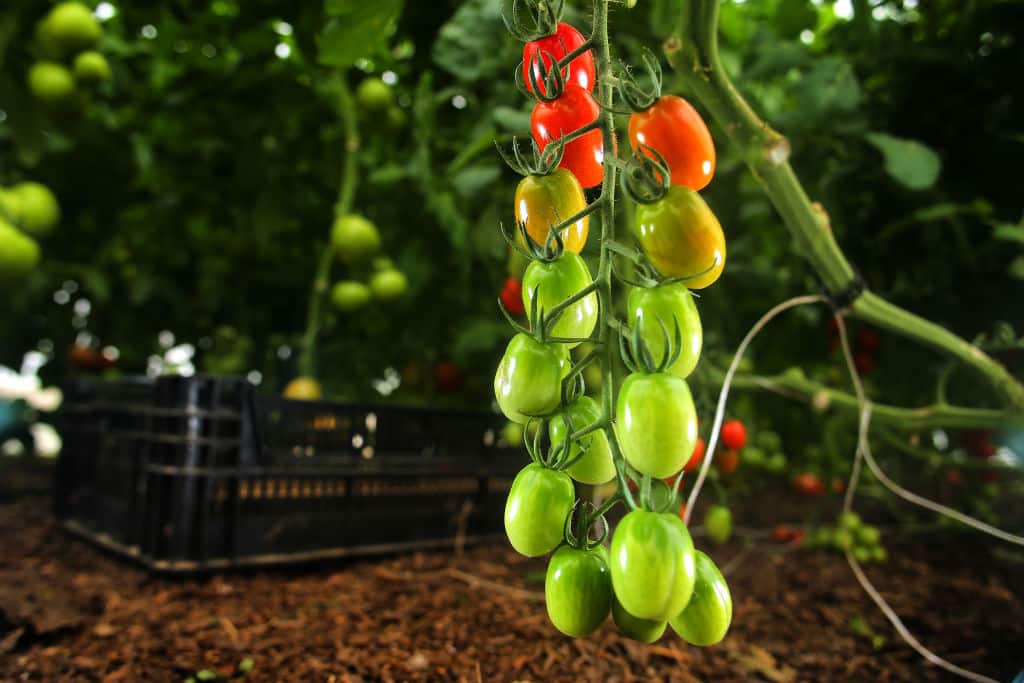
Supports Biodiversity
Soil is the foundation of any ecosystem, and improved soil biodiversity gives rise to the recovery and increased diversity of plant life, as well as an increase in insect, pollinator and bird populations.
The regenerative system is more diverse, with a greater variety of vegetables and fruits being grown through crop rotations, hedgerow conservation buffers — lines of trees or shrubs around crops that provide habitat for organisms like beneficial insects and act as windbreaks — and riparian conservation buffers — areas with vegetation close to streams that preserve water quality, provide habitat to a range of helpful organisms and mitigate flooding.
Economic Benefits
Using regenerative farming methods to improve the soil, along with less chemical pesticides, herbicides and fertilizers, reduces costs and improves the health and yields of crops, which often leads to higher profits.
In addition to vegetables and grains like wheat, rye, barley and oats, eggs, honey, berries and herbs can be additional sources of revenue in a regenerative system.
Improves Community Health
Regenerative farmers tend to have more established relationships with the consumers of the crops they grow, as well as with communities of other farmers. Reaching out for assistance with repairs, advice or for help during floods or wildfires can be easier with an individual or group of individuals than with a seemingly faceless corporate entity. For example, most of the farms in California are family-owned, while the four corporations Cargill, Bunge, Archer-Daniels Midland and Louis Dreyfus control almost 90 percent of the international grain trade.
Having a community of regenerative farmers and ranchers also means being able to form cooperatives to pool their power for a bigger market share of the proceeds from their crops.
Welcoming visitors helps farmers and ranchers build an even wider community with whom to share information, tips and experience while embarking on or transitioning to more regenerative practices.
Mental and Physical Health Benefits
The fact that regenerative agriculture is more about working with nature rather than against it gives the farmer or rancher a greater sense of being a part of the larger ecosystem, which is beneficial to their mental and physical health.
Regenerative farmers gain improved mental and physical health for themselves, their family and the larger community through developing healthy soil with increased longevity to grow nutritious food not only for themselves, but for future generations.
What Can We Do to Support Regenerative Agriculture?
As a Society?
According to scientists, there is more carbon in soil than in the atmosphere and all the plant life on Earth combined. Farmers and ranchers have enormous power to reverse the impacts of climate change by rethinking and restructuring their agricultural and ranching practices. By supporting those who embrace the philosophy and methods of regenerative farming and ranching, we as consumers can become a part of building an agricultural system that is resilient and can adapt to the changes — such as drought, floods and extreme weather — that the climate crisis brings, while helping to reduce its effects by turning the tide until we are adding more good than harm.
In Our Own Lives?
Here are some ways to support regenerative agriculture in your own community and beyond.
- Buy food from local regenerative farms. Once you know their names, you may be able to visit individual farms, find them at a local farmers market or see their products in a grocery store. They may also have a delivery service. Regeneration International has a handy Regenerative Farm Map to help you find regenerative farms in your area.
- Donate your money, time or resources to regenerative farming nonprofits and research organizations like Kiss the Ground, Regenerative Agriculture Alliance and RegenAg.
- Buy clothes made from regenerative fabric. Natural fibers used to make clothing like hemp, cotton, wool and linen that are grown or come from an animal that is raised on a regenerative farm or ranch are also seen as regenerative. Fibershed is a California nonprofit that develops regional fiber systems to build soil and protect the environment. Some clothing brands that source materials from regenerative farms include Harvest & Mill, Patagonia and Seed2Shirt.
- Become an advocate for regenerative agriculture by telling your friends about an organization, food or product that supports regenerative agriculture and spread the regenerative love!
- Put regenerative agricultural practices to use by starting your own community garden. Do you or one of your neighbors have a plot of backyard space that could be used to start an ecological oasis and pollinator habitat? Or, if you want to go a little bigger, maybe you have some friends or colleagues who might want to pool resources and purchase a plot of land to rewild and farm regeneratively. Reclaiming a piece of Earth for the sake of biodiversity can be empowering, and it’s a great way to help actively mitigate the climate crisis.
Takeaway
With the global population predicted by the United Nations to swell to 9.7 billion by 2050, the need for food and land will also increase. As the human race comes to terms with the realities of climate change, more and more farmers and ranchers are reexamining their conventional practices and realizing that a future without regenerative agriculture is no future at all.
Regenerative agriculture is an essential part of fighting the climate crisis. The breakdown of ecosystems due to monoculture and other destructive practices of industrial agriculture and ranching is one of the most damaging things humans are doing to the planet. But regenerative agriculture and the raising of animals in a natural, balanced environment is there for farmers, ranchers, advocates, legislators and communities — especially those that have been underrepresented and disenfranchised — to embrace as we strive to repair the damage we have done, rebuild what we have broken down and allow the amazing power of nature to rebalance the incredible planet we all share.
Subscribe to get exclusive updates in our daily newsletter!
By signing up, you agree to the Terms of Use and Privacy Policy & to receive electronic communications from EcoWatch Media Group, which may include marketing promotions, advertisements and sponsored content.

 233k
233k  41k
41k  Subscribe
Subscribe 




